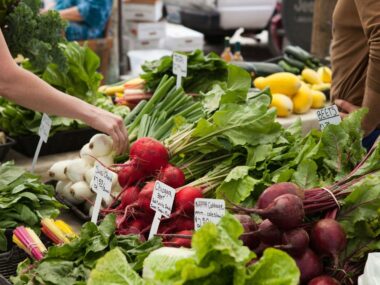Ensuring farmers have adequate access to markets and financial resources is essential for fostering agricultural development, improving livelihoods, and achieving food security. This comprehensive guide explores various aspects, challenges, and solutions related to enhancing farmers’ access to markets and finance.
1. Introduction
Definition: Access to markets refers to the ability of farmers to sell their produce at fair prices, while access to finance involves the availability of financial services and products to support farming activities.
Importance: Crucial for improving farm productivity, income stability, and rural development.
2. Current Challenges
Market Access:
Infrastructure: Poor roads, lack of transportation, and inadequate storage facilities.
Information Gap: Limited access to market information and prices.
Middlemen: Exploitative practices reducing farmers’ profit margins.
Financial Access:
Credit Availability: Limited access to affordable credit and loans.
Collateral Requirements: Stringent collateral demands by financial institutions.
Financial Literacy: Low levels of financial literacy among farmers.
3. Improving Market Access
Infrastructure Development:
Roads and Transport: Investment in rural road networks and transportation systems.
Storage and Processing: Building warehouses, cold storage, and processing units.
Market Information Systems:
Digital Platforms: Mobile apps and online platforms providing real-time market data.
Extension Services: Government and NGO-led initiatives to disseminate market information.
Cooperatives and Farmer Organizations:
Collective Bargaining: Strengthening cooperatives to improve bargaining power.
Shared Resources: Pooling resources for better market access and reduced costs.
Direct Market Linkages:
Farmers’ Markets: Establishing local and regional farmers’ markets.
Contract Farming: Agreements between farmers and buyers for assured markets.
E-commerce: Online marketplaces connecting farmers directly with consumers.
4. Enhancing Financial Access
Microfinance and Credit Schemes:
Microfinance Institutions (MFIs): Providing small loans to farmers without stringent collateral.
Government Schemes: Subsidized credit programs and grants.
Innovative Financial Products:
Crop Insurance: Protecting farmers against crop failure risks.
Warehouse Receipt Systems: Using stored produce as collateral for loans.
Digital Financial Services: Mobile banking and digital wallets for easier transactions.
Capacity Building:
Financial Literacy Programs: Training farmers in financial management and planning.
Business Development Services: Support in developing business plans and accessing credit.
Partnerships and Collaborations:
Public-Private Partnerships: Collaborations to provide financial services and infrastructure.
NGOs and Development Agencies: Programs to support financial inclusion.
5. Case Studies and Success Stories
Example 1: Successful implementation of digital platforms in Kenya to provide market information and mobile payments to farmers.
Example 2: Cooperative farming in India enhancing market access and financial services for smallholder farmers.
Example 3: Microfinance programs in Bangladesh empowering women farmers through accessible loans and savings.
6. Technological Innovations
Blockchain for Agriculture:
Supply Chain Transparency: Ensuring traceability and transparency in the supply chain.
Smart Contracts: Automated agreements between farmers and buyers, reducing the need for intermediaries.
Precision Agriculture:
Data-Driven Decisions: Using data analytics for better crop management and market planning.
Remote Sensing: Monitoring crop health and predicting yields to align with market demands.
E-Agriculture Platforms:
Marketplaces: Connecting farmers directly with consumers and businesses online.
Advisory Services: Providing expert advice on crop management and market strategies.
7. Policy Recommendations
Government Policies:
Subsidies and Incentives: Providing subsidies for infrastructure development and financial access.
Regulatory Reforms: Simplifying regulations to encourage private sector investment in agriculture.
International Support:
Development Aid: Financial and technical assistance from international organizations.

Facilitating access to international markets through favorable trade policies.
Sustainable Practices:
Eco-Friendly Farming: Promoting sustainable farming practices to attract premium markets.
Climate-Resilient Infrastructure: Building infrastructure to withstand climate change impacts.
8. Conclusion
Holistic Approach: Emphasizing the need for a comprehensive approach that integrates market access and financial services.
Empowerment: Ensuring that farmers are equipped with the knowledge, tools, and resources to succeed.
Sustainable Development: Aligning efforts with sustainable development goals to ensure long-term benefits for farmers and communities.
Improving farmers’ access to markets and finance is vital for the advancement of the agricultural sector. By addressing the challenges and leveraging innovative solutions, we can empower farmers to enhance their productivity, secure better incomes, and contribute to global food security. Collaboration among governments, private sector, NGOs, and international bodies is essential to create an enabling environment that supports farmers’ growth and resilience.










